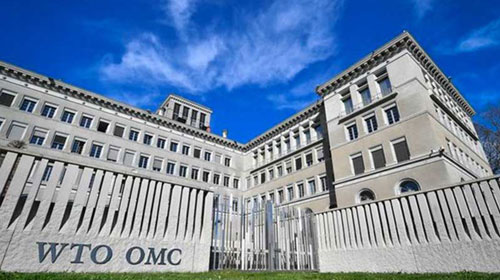Introduction
We greatly appreciate the opportunity to provide comments and make this submission. On account of the relatively short comment period, this submission merely outlines our preliminary thoughts on key issues that deserve immediate attention.
We welcome the opportunity to provide more detailed input to the committee in whatever format (e.g., virtual, in writing) the Committee prefers. With more time, we can also convene a broader working group of arbitration experts, including practitioners, for this purpose.
Who We Are
Established in 2003, the Center for Negotiation and Dispute Resolution (CNDR) at UC Law San Francisco is one of the oldest law school alternative dispute resolution (ADR) centers in the United States. It is a premier ADR think tank that brings cutting edge research to bear on the latest developments in practice faced by lawyers, neutrals, governmental actors, NGOs, and parties seeking to resolve their disputes out of court. It is also an award-winning training institute that offers hands-on, practice-ready education to law students in small classes of twenty or fewer.
This submission was prepared by:
• Hiro Aragaki, Professor of Law at the University of California College of Law in San Francisco and Director of CNDR. Professor Aragaki is also a Chartered Arbitrator with the Chartered Institute of Arbitrators and has served as a neutral (mediator or arbitrator) for approximately twenty years, currently with JAMS in Los Angeles and London. He was appointed in 2019 as an Advisor to the Expert Committee on Mediation, Supreme Court of India, and separately conducted a study of the 2015 Amendments to the A&C Act (Arbitration Reform in India: Challenges and Opportunities, in THE DEVELOPING WORLD OF ARBITRATION: A COMPARATIVE STUDY OF ARBITRATION REFORM IN THE ASIA PACIFIC REGION, 2018).
• Srividhya Ragavan, Professor of Law & Director, International Legal Program, Texas A&M School of Law. Professor Ragavan is also a member of the Center for Learning Intellectual Property Rights. Her expertise is in intellectual property and trade law with a specific focus on issues that impact developing countries. She lends her experiences with arbitration and related issues from the vantage of her expertise as an academic as well as her practice experience including at Wipro Ltd, and Titan Industries Ltd.
Both Professors wish to thank and acknowledge Attorney Parul Goyal, High Court of Rajasthan, for her help, comments and inputs on the draft of this note.
III. Big Picture Considerations
• National legislation may not be the best vehicle for reforming all aspects of the arbitration system. Consider the important reform and regulatory roles that can be played by private arbitral institutions—for example by institutions in coveted seats such as London and Singapore.
• The delays and inefficiencies in the Indian arbitral system may have to do with aspects of the judicial system in general, such as resource limitations, lack of effective case management procedures, and liberal rights of appeal—more so than with failings in the A&C Act.
• Importance of reducing the use of ad hoc arbitration and of promoting a robust culture of institutional arbitration, which is the norm in leading arbitration jurisdictions.
• Given the pendency of the mediation bill, this is an opportunity to consider ways to integrate mediation into the arbitration system in order to achieve greater efficiencies, access to justice, and a harmonious ADR ecosystem.
IV. Key Issues and Suggestions
A. Enforcement and Set-Asides
1. Because much of the delay at the enforcement stage has to do with the ability to file multiple appeals, consider:
• Eliminating appeals of orders enforcing arbitral awards and allowing them only for set-aside orders.
• Limiting appeals to only one tier of review. E.g., if an enforcement order is filed in a district court, it can only be appealed once to a High Court.
• Incorporating a certiorari or a probable cause mechanism, such as exists in jurisdictions like the United States, whereby before an appeal of an enforcement or set-aside is taken, the reviewing court can screen the case and deny review. The U.S. Supreme Court reviews on the merits less than 4% of cases filed.
2. We do not consider it prudent to significantly modify section 34 of the A&C Act, other than to circumscribe or provide more guidance on the scope of the public policy ground and to strengthen the requirements for a pre-deposit from parties challenging an award.
3. We do not believe it is possible to replace the set aside procedure contemplated in section 34 with an appellate arbitration procedure. The courts perform an important function supporting and also legitimizing the arbitration process, and even an appellate arbitral award will need to be enforced. Appellate arbitration can be a useful option, but it is not commonly chosen by parties in jurisdictions like the U.S. where established procedures exist.
B. Promoting Institutional Arbitration. We believe it is important to promote more use of institutional arbitration, in order to create an ecosystem wherein the vast majority of arbitrations occurring in India will be institutional rather than ad hoc. We think this can be approached in several ways:
1. Legislative interventions. For example:
• If the arbitration agreement is silent about whether the case will be administered at an institution, consider a default rule that the agreement will be construed to require institutional arbitration. Parties who truly desire ad hoc arbitration can revise their arbitration agreements going forward to make that clear.
• Require courts, when ruling on a section 8 referral to arbitration, to also refer the case to a specified institution (with input from the parties), perhaps with limited exceptions. This would essentially force parties into institutional arbitration but only if they disagree about enforcement of the arbitration agreement. Parties who truly wished to arbitrate ad hoc would not be affected.
• The 2015 amendments gave courts the administrative power to designate arbitral institutions under section 11. Consider whether courts should also be required to designate arbitral institutions as appointing authorities. This may help parties become more familiar with arbitral institutions and encourage them to choose institutional arbitration in the future.
• Consider requiring disputes over a certain value or involving certain subject matters, or government parties, etc. to be institutionally administered.
2. The government could provide financial or other support to existing arbitral institutions, and/or create new arbitral institutions through public-private partnerships. It could also support the Bar Council, bar associations, and arbitral institutions in educating lawyers and parties about the differences between arbitration and litigation and the benefits of institutional arbitration, such as through the creation of arbitration committees, arbitration advocacy training for practitioners, and outreach to law schools.
3. Institutionalizing arbitration would help promote market competition in the arbitration services industry, by democratizing the pool of arbitrators and arbitration providers. This, in turn, will result in better trained and more tech-savvy arbitrators being included on the rosters of those institutions.
4. Online Dispute Resolution platforms can also help in furthering this agenda by providing access to institutional arbitration to small and medium sized businesses and individuals in tier 2/3 cities that have limited access to arbitration facilities.
C. Don’t Overlook Private Governance. Consider that arbitral institutions may be a source of private governance to help regulate certain aspects of arbitration, perhaps more effectively than national legislation.
1. For example, instead of making the ACI directly responsible for registering and overseeing arbitrators, perhaps the ACI could encourage the development of a competitive market of private arbitral institutions. The institutions could screen arbitrators, maintain their own rosters of arbitrators, require them to undergo continuing education and training, and be responsible for adjudicating challenges to arbitrators and complaints about them. The ACI’s role could then be limited to setting the minimum criteria that all private institutions would need to follow in this regard.
2. Arbitral institutions may also be better placed to address issues such as the need for more technological literacy among arbitrators, the need for diversity within the pool of eligible arbitrators, limitations on arbitrator fees, retired judges who don’t appreciate the difference between civil procedure and arbitration procedure, etc. Retired judges acting as arbitrators is not necessarily a problem—it happens frequently in the U.S. The difference is that in the U.S., they are typically not operating ad hoc and therefore come within the oversight and guidance of institutions.
D. Timelines/Deadlines. It has been suggested that there should be strict timelines for each stage of the arbitral proceeding. Time periods for court enforcement of arbitral awards have also not been implemented successfully. Although we believe timelines can serve a useful purpose, timelines can sometimes do more harm than good, e.g., when lawyers use them in strategic ways that end up derailing the process. And as increased recourse to institutional arbitration begins to foster greater competition for services, arbitrators will have a built-in incentive to work efficiently in order to attract more business. For this reason, we suggest:
1. Instead of including timelines in national legislation, consider a directive from the ACI requiring arbitral institutions to set, or consider setting, certain crucial timelines for completion of stages of the arbitration. Institutions are better positioned to enforce timelines effectively.
2. With regard to court timelines, such as the period within which applications to set aside must be decided, consider that timelines may not be sufficient if there are other resource constraints or procedural rules in place that make it nearly impossible for judges and parties to comply with the timelines. Reforms in these areas may therefore be more important.
E. Mediation. Consider ways to better integrate mediation into the arbitration process, either through legislation or having the ACI issue minimum requirements/guidance on this subject to arbitral institutions. Parties could be required, at some point prior to the merits hearing and not necessarily before the arbitration is filed or the proceedings begin, to attend a mediation session (with the right to opt-out). Many institutions around the world, such as the ICC, are currently looking into this issue. In the U.S., upwards of 50% of all arbitrations settle prior to the evidentiary hearing. There is an exciting opportunity to consider coordinating arbitration and mediation reforms given that a new mediation bill is currently pending in Parliament.
V. Conclusion
There are many other suggestions and comments which space and time prohibit us from elaborating on at this juncture. Examples include:
- developing a Code of Conduct for Arbitrators, as exists in some jurisdictions such as the U.S.;
- legislative amendments around anti-suit injunctions in favor of arbitration;
- differing regimes for domestic and international arbitration;
- restricting the appointment of government officers/employees as arbitrators;
- rules around the award of interest;
- other provisions of the A&C Act that may benefit from further revision, such as sections 9(2) and 13(5).
We would be delighted to meet virtually or submit a more detailed note on issues that the Committee is specifically inclined to seek inputs on. We thank you for considering our comments and look forward to hearing from you.



